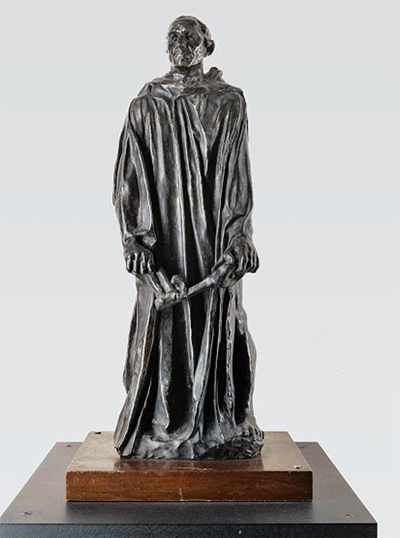In 1884, Auguste Rodin was approached by the mayor of Calais to come up with sculptures of the six men who offered themselves as hostages so that the English King, Edward the third would spare their city which was starving. The initial order was to sculpt only one of the burghers; the eldest and the first person who offered himself as a hostage.
Auguste Rodin, however, went ahead and sculptured all the six burghers. Among the six hostages was one Jean D'Aire. The statue of Jean D'Aire was commissioned by Mayor M. Omer Dewavrin in 1884. It features Jean D'Aire in sackcloth with the keys to the city in his hands as he goes to hand over himself to the English king in a bid to save his city. The statue was perfectly done, Rodin made sure that the brave look of the burgher was depicted flawlessly.
The sculpture was first presented to the committee in January 1885. Auguste Rodin made the initial sculpture from clay. This sculpture was later cast in bronze. The final piece is a glossy statue with a lot of details giving it a rare yet subtle look. Using the sculpture, Auguste Rodin was able to showcase the situation of Jean D’Aire during that particular moment. Inspired by the burghers who decided to grant freedom to their friends and families by giving themselves up as martyrs, Auguste Rodin comes up with a perfect sculpture of Jean D'Aire, one of the six citizens. His mastery of the art is vividly seen as he cleverly develops a masterpiece of the burgher.
Jean D'Aire is seen emaciated due to the yearlong starvation the city was going through after being cut off from food sources by the English. D'Aire is seen in sackcloth which is long enough thus concealing his feet. In his hands rests the keys to the city as King Edward the third had ordered. The details are well delivered, and the final piece is impressive. Auguste Rodin also makes sure that the sculpture is visible enough by artistically placing a number of wrinkles on the sackcloth. Jean D'Aire's face is well achieved. The site is that of a brave man ready to face the wrath of the king for the sake of his town is well portrayed from the sculpture. It is however said that the King’s wife pleaded for their release.




